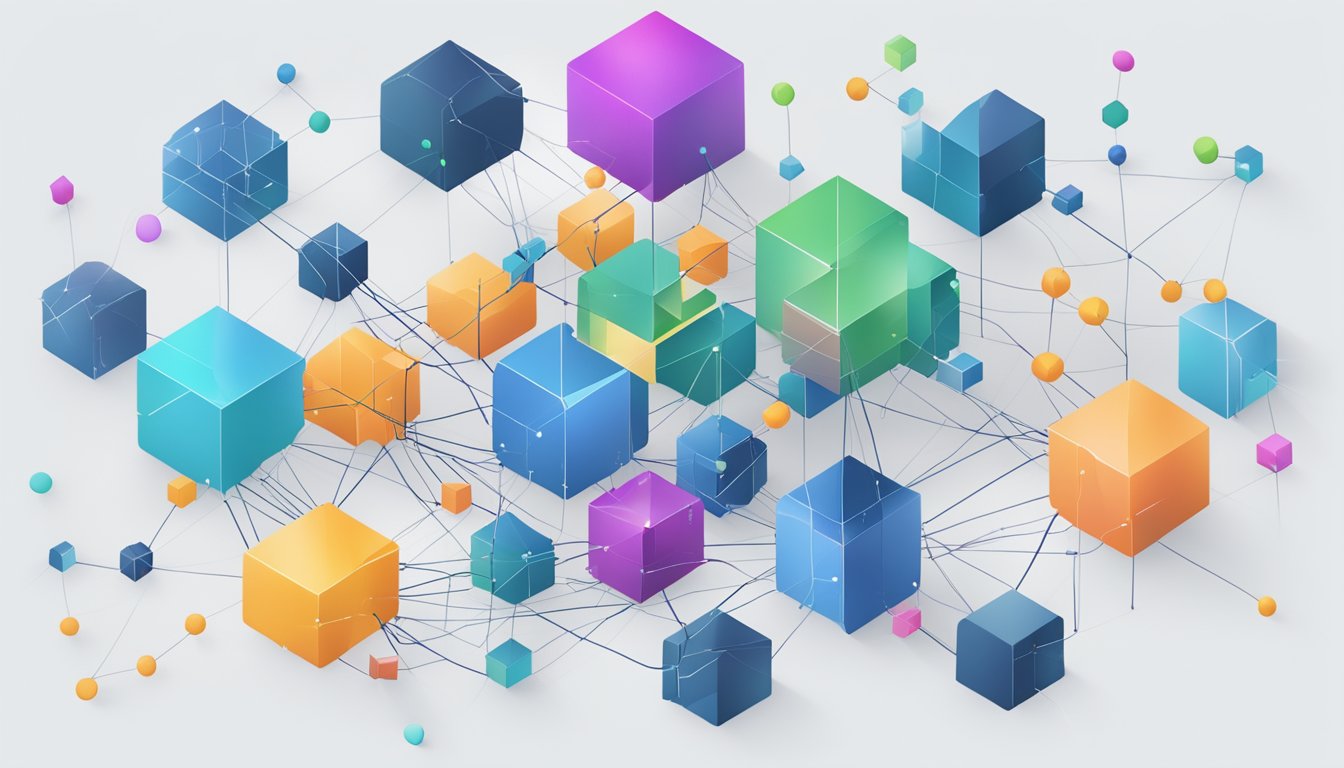Scaling Up with AI: Key Strategies for Business Growth and Innovation
Are you ready to take your organization on an AI-fueled journey of growth? Scaling up with AI isn’t just about adding more technology; it’s about fundamentally transforming how your company operates. Imagine having the capability to process data at superhuman speeds, analyze trends at an unprecedented scale, and ultimately provide insights that can push your business miles ahead of the competition.

How do organizations go about this? It starts with identifying opportunities where AI can make a significant impact quickly, such as automating mundane tasks, gaining customer insights, or even optimizing supply chains. From there, the process of scaling up involves not just integrating technology, but also reshaping organizational culture to embrace AI-driven decision making.
Companies across various industries are harnessing the power of AI to grow in ways they never thought possible, proving that it’s not solely a tool for the tech giants. With smart strategies and the right tools, even smaller businesses can upscale their images in the marketplace and find their edge. The path to scaling up with AI is filled with potential roadblocks, but it’s also rife with opportunity—are you ready to embark?
Understanding AI and Its Impact on Industry
When you hear “artificial intelligence,” what springs to mind? Maybe intelligent robots or your favorite sci-fi movie? In reality, AI’s integration into various industries is revolutionizing how we approach work and problem-solving every day.
AI Basics and the Rise of Machine Learning
So, what is AI exactly? At its core, AI is technology designed to replicate human intelligence. That’s piece of cake, right? Not quite. AI encompasses complex algorithms and data-driven approaches like machine learning (ML), which enables computers to learn from and act upon data, improving their accuracy over time. Think of ML as a super-ambitious student that never stops learning – the more data it gets, the smarter it becomes.
Real-world applications are popping up left and right. In healthcare, machine learning models are diagnosing diseases with startling precision. In finance, AI algorithms help detect fraudulent transactions in real-time – saving time, saving money; it’s a win-win! And that’s just the tip of the iceberg.
Real-World Applications Across Various Industries
Let’s dive into the multitude of industries transformed by AI:
-
Healthcare: AI isn’t just making waves; it’s making tsunamis. With patient care getting sharper thanks to technologies like predictive analytics, healthcare professionals can forecast patient outcomes and tailor their care plans.
-
Manufacturing: Robots in factories might not be a new story, but AI-powered robots that learn and adapt? That’s the juicy new chapter. They’re optimizing production lines and minimizing waste, all while keeping their human co-workers safe.
-
Retail: Ever wonder how online stores seem to know exactly what you want? Thank AI for that expert shopping experience. It’s personalizing the way you browse and buy, keeping your wallet just a bit lighter.
-
Transportation: Self-driving cars aren’t just cool; they’re closer to becoming your next chauffeur, thanks to leaps in AI technology. They’re not just learning the rules of the road; they’re learning how to navigate the complexities of human behavior.
In each of these examples, the real star is the application of AI that’s specific to the industry’s needs. It’s not about having tech for the sake of it; it’s about applying that tech to make real, tangible improvements.
AI’s impact is not just a trend; it’s a monumental shift in the way industries operate. You’re witnessing the unfolding of a new chapter where machine intelligence significantly enhances human work, and that’s something to be excited about. Get ready for a smarter, more efficient future – it’s already on its way!
Preparing for AI Upscaling
When you’re set to bring the power of artificial intelligence into scaling your operations, there’s a bit you need to button up first. Think of it as setting the stage for a grand performance where the lead actor is AI. Are you ready for the show?
Cultivating the Right Organizational Culture
To really harness the benefits of AI upscaling, you need to cultivate a soil that’s ripe for innovation. That means building an organizational culture that’s aligned with continuous learning and change. It’s no small feat, mind you. But, hey, who ever rose to the top without embracing a bit of change?
- Emphasize agility: Your teams must be quick on their feet, ready to pivot and adapt to new AI-driven workflows.
- Promote AI literacy: Everyone from the top brass to the new intern should get what AI can and cannot do.
- Foster collaboration: Cross-functional teams ought to synergize because AI intersects various departments.
Investment and Budgeting for AI Initiatives
Before you get too excited and yell “Charge!” at the sight of potential AI improvements, let’s talk dollars and sense. Investing in AI isn’t like buying a new coffee machine for the office. It’s a strategic move that demands forethought and, yes, a well-planned budget.
- Assess your needs: What scale of AI integration does your business strategy call for?
- Forecast outcomes: What ROI can you expect, and how will AI upscaling contribute to your bottom line?
- Allocate resources: Set a budget that reflects the scale of your AI ambition, and don’t forget to earmark funds for ongoing training and change management.
Remember, investing in AI isn’t a magic bullet. It’s a calculated step in your evolving business strategy. And as with any big moves, be sure to measure twice and cut once—or in this case, budget thoroughly and invest wisely. Ready to dive in?
Setting the Stage for Scaling AI

Before you can reap the benefits of artificial intelligence in your organization, laying a proper foundation is crucial. Let’s dive into how you can set the stage for scaling AI with the right team and approach!
Building a Skilled AI Team
Guess what? Your AI is only as good as the people behind it. You’ll need a mix of roles, from data scientists to AI strategists, to HR folks who understand the tech talent market. These are the pros who will translate your business problems into AI solutions that can truly scale.
- Locate the Talent: Find individuals with a strong grip on AI capabilities but don’t forget soft skills – teamwork, can you believe it, actually matters in tech!
- Continuous Learning: Ensure your team keeps up with AI trends through workshops and courses. The AI landscape is always changing, just like your favorite social media app!
Pilot Projects and Agile Methodologies
Starting small and agile is your ticket to big wins down the line. Pilot projects act as your AI playgrounds where failure isn’t just acceptable, it’s expected!
- Test the Waters: Start with a project that has clear KPIs, where AI can clearly show its muscle without lifting heavy weights right off the bat.
- Iterate Like Crazy: Use agile methodologies to quickly adapt and learn from each AI experiment. It’s like a video game—each level teaches you something new for the next one.
By focusing on these areas, you’re not just playing dress-up with AI. You’re setting the scene for a solution that grows with you, fosters innovation, and maybe, just maybe, becomes your organization’s new MVP. So, ready to scale new heights with AI?
Key AI Technologies for Scaling

When you’re ready to take your AI projects to the next level, knowing the right technologies to leverage is crucial. Let’s dive into some of the tech that can help you scale up without breaking a sweat!
Enhancing AI with Advanced Algorithms
You’ve probably heard that algorithms are the heart of any AI system. They’re like the secret recipes that make everything work just right. But did you know that advanced algorithms can significantly enhance AI scaling? For instance, AI upscaling algorithms are getting smarter, able to interpret and enhance image resolutions from standard HD to stunning 4K without losing quality. Say goodbye to pixelated images and hello to crystal-clear detail! Companies like Nvidia are pioneering this field with cutting-edge AI upscaling technologies that can turn even the oldest, grainiest cat photo into a masterpiece.
- Nvidia’s AI Scaling: Turning standard HD into 4K clarity.
Leveraging High-Resolution Upscaling Tools
Ever wished you could turn your collection of JPG and PNG photos into something that looks outstanding on a 4K display? Well, with high-resolution upscaling tools, you can! These tools use AI to add extra pixels to your images, boosting them up to higher resolutions like HD and 4K. We’re not talking about ordinary stretching; we’re talking about smart upscaling that fills in the gaps with an educated guess on what should be there. This means your old favorites can get a facelift and come out looking better than ever. Plus, formats like WebP offer high-quality with smaller file sizes, perfect for keeping your website speedy.
- Image Formats: Upscale from PNG to WebP for performance without losing quality.
- Resolution Enhancement: AI-driven tools to upscale images to HD and even 4K resolutions.
Just remember, the secret sauce to scaling up with AI isn’t just in the algorithms or the tools, but how you blend them to create a delicious tech feast. So go ahead, up those pixels and fine-tune those algorithms; your AI projects are about to get a seriously high-res upgrade!
Integration and Collaboration

Embarking on a journey to scale AI in your organization isn’t just about the technology—it’s about how well you blend it with your people and processes. Ready to break down those silos and amplify data’s value?
Fostering Interdepartmental Synergies
You’ve got a powerhouse of a marketing team, a finance group that’s solid as a rock, and an operations crew that can tackle anything. But are they talking to each other, I mean really talking? To scale AI effectively, you need to get all your departments on the same page. Imagine all your teams working harmoniously, their systems interlinked, their goals aligned. That’s when collaboration turns into innovation, where AI doesn’t just streamline – it transforms. Companies who have cracked this code often see a significant lift in productivity. Start by setting up regular cross-departmental meetings and see the barriers disappear.
The Role of IT and Data Management
Alright, let’s roll up our sleeves and dive into the techy stuff. We’re talking about your IT folks and those data wranglers that handle the lifeblood of your AI aspirations—data. Data management is crucial, as it’s not just about collecting data, but making it actionable and reliable. Your IT team is pivotal in this, ensuring fluid communication between systems and safeguarding data integrity. Bad data leads to bad AI, and nobody wants that! So, ensure your data practices are top-notch, with clear protocols for everybody to follow. Remember, the backbone of effective AI scaling is built on strong IT and data management foundations.
Now that we’ve chatted about knitting together departments and the nitty-gritty of data management, you’re better equipped to sail smoothly into AI-driven horizons. Keep these conversations going within your teams; after all, it’s the synergy and meticulous management that’ll launch your scalability into the stratosphere!
Operationalizing AI at Scale

Scaling AI technologies across a business involves bridging the gap from experimental to operational. It’s not just about having the smartest algorithms; you need to integrate them smoothly into business processes. So, let’s dive right into how you can make this happen.
MLOps: Best Practices for ML Models in Production
Think of MLOps as the backbone of operational AI. It helps you manage and automate your machine learning lifecycle, ensuring that your models are not just academic experiments but real-world powerhouses. Here are some best practices:
- Version Control: Like any good code, your ML models need to be versioned to track changes and maintain consistency over time.
- Continuous Integration/Delivery (CI/CD): Automatic testing and deployment of ML models accelerate the production process, much like software development.
- Monitoring and Management: Keeping an eye on model performance is crucial, as is adjusting on the fly to ensure reliability.
By putting these principles into practice, you’ll keep your machine learning operations running like a well-oiled machine.
Ensuring Security and Compliance Standards
When you’re up to your elbows in data, don’t forget about security and compliance—it’s serious business! Implementing robust security protocols is not optional; it’s a necessity to protect sensitive data. Here’s what you need to focus on:
- Data Encryption: Whether it’s at rest or in transit, your data should always be encrypted.
- Access Control: Only authorised personnel should have access to the AI systems, maintaining integrity and privacy.
- Regulatory Compliance: Keeping up with standards like GDPR is not just good practice—it’s mandatory.
With these security measures in place, you can rest easy knowing your AI isn’t just smart, it’s also safe.
Measuring Success and Growth
Have you ever wondered how you can really tell if your AI investments are paying off? The secret sauce is in the numbers and the nuanced impacts that aren’t always reflected in the balance sheets. That’s right, we’re going beyond mere revenue and EBIT—let’s dive into the data-driven world of Key Performance Indicators (KPIs) and the intangible yet invaluable impacts of AI on your business.
Tracking Key Performance Indicators
When it comes to AI, your supply chain and customer experience could be leagues ahead of where they were. But how do you measure such improvements? Start with KPIs that make sense for your business. Consider metrics like order fulfillment times, which signal supply chain efficiency, or customer satisfaction scores that reflect the personalized experiences AI can provide.
- Revenue: Is your revenue growing since implementing AI solutions?
- EBIT: How much has your earnings before interest and taxes improved?
- Order Accuracy: Has AI enhanced the precision of your supply chain orders?
With more data at your disposal, tailor your KPIs to track your specific growth and AI efficacy, using analytics tools to cut through the noise.
Beyond Revenue: Evaluating AI’s Intangible Impact
Now, let’s get real about AI’s intangible benefits. Sure, the numbers are crucial, but what about the boosts in decision-making quality and efficiency? AI provides insights that humans can miss, leading to sharper strategies and competitive edge.
- Innovation: Has the speed of product development increased?
- Decisions: Are you making faster, more informed decisions thanks to AI-driven analytics?
Remember, growth isn’t just a number—it’s about leveraging AI to lead in your market niche by making smarter choices every day. Keep those benefits in mind as you assess your AI journey. The results may surprise you!
Continuous Improvement and Innovation
In the realm of artificial intelligence, your capacity to innovate and improve continuously can set you apart from the competition. Let’s explore how adapting to change and seizing futuristic AI promises can propel your stride in the market.
Adapting to Change and Evolving AI Use Cases
Have you ever wondered why some companies excel while others lag behind? A big part of that secret sauce is their agility in adapting to change. AI isn’t just a one-off project; it’s a continuous journey that can amplify your success. For instance, companies are enhancing their marketing strategies with AI by sharpening audience targeting, which boosts engagement and conversion rates. A static AI use case can grow stale; it’s crucial to evolve with the times. Imagine your AI as a gardener, constantly tending to your business needs, pruning away inefficiencies and nurturing growth.
The Promise of AI: Looking to the Future
The promise of AI isn’t just about what it can do now, but what it holds for your future. Are you ready for a sneak peek? Future AI could transform the very core of how businesses operate and drive innovation at an unprecedented scale. Embrace AI for a wild ride towards remarkable outcomes in quality, speed, and decision-making. MIT CISR emphasizes this point, highlighting how trust and accuracy in AI models bolster organizational confidence, laying the groundwork for AI to deeply integrate into operations.
Remember, adapting and innovating aren’t just buzzwords; they’re the bread and butter of thriving in a tech-forward future. So, are you ready to adopt these transformative strategies? Your journey in AI is just beginning, and the sky’s the limit!
Frequently Asked Questions
Navigating the intricacies of AI implementation can be tricky, but with the right insights, you’ll be on the path to scaling your business like a pro. Here, we tackle the crucial questions that pop up when you’re ready to amp up your AI game.
What are the best practices for effectively incorporating AI into a business’ growth strategy?
To effectively integrate AI, start by ensuring that your data strategy is solid. Prioritize investing in a strong data foundation that supports AI and ML models. Next, focus on areas that promise quick wins to generate momentum and share these successes across the organization, building on interconnected activities.
Can you give examples of successful AI scaling initiatives implemented in companies?
Absolutely! Look at industries like financial services or high-tech, which are pioneering AI integration. They typically have advanced digital infrastructure that favors the seamless incorporation of AI into their daily processes, enhancing their efficiency and customer offerings.
Could you explain the concept of AI scaling and its impact on business operations?
AI scaling means taking AI from a small-scale, experimental phase to full-on implementation across various aspects of a business. The impact is profound: operations become more efficient, decision-making is data-driven, and there’s a spider-plant effect where the core AI model’s value grows and multiplies.
What strategies can organizations employ to overcome challenges in AI scaling?
One key strategy is to tackle the skills gap by upskilling current employees or acquiring new talent with the required expertise. Also, fostering a culture that embraces change can help mitigate resistance within the organization. Another approach is to phase scaling efforts to manage resource strain.
What are some tools and technologies essential for scaling AI in various industries?
To scale AI, you’ll need robust data processing and storage systems, machine learning frameworks, and AI-powered analytics tools. It’s also crucial to leverage cloud computing for flexibility and scalability, and consider platforms that allow for collaborative AI development.
How do advances in AI contribute to scaling up business processes and decision-making?
AI advances bring about smarter algorithms that can analyze vast datasets more efficiently, automating and enhancing both routine tasks and complex decision-making. This means businesses can respond quicker to market changes, personalize customer experiences, and innovate faster than ever.







